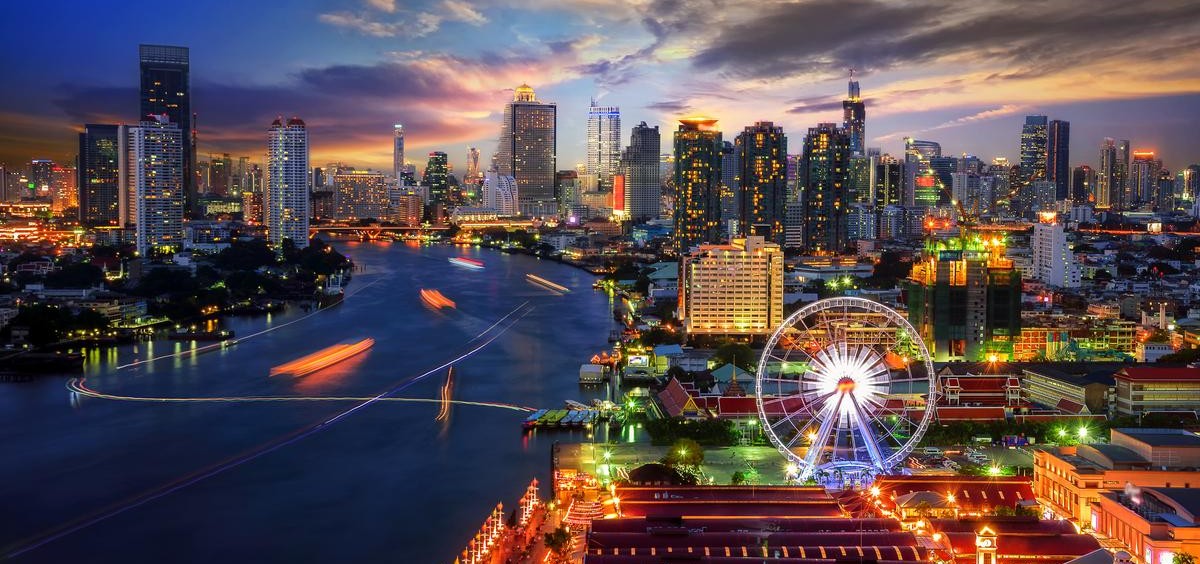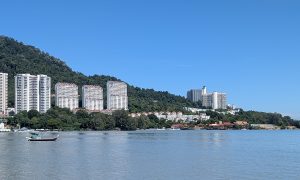The Thai capital city seems to operate on another level to everyone else when it comes to tourism and global appeal.
Bangkok has firmly established itself as the world’s most-visited city, drawing a record-breaking 32.4 million international visitors in 2024, according to a recent Euromonitor International report. This achievement positions Thailand’s capital city far ahead of its nearest competitor, Istanbul, which welcomed 23 million visitors.
Thailand’s proactive, liberal tourism policies have been instrumental in Bangkok’s success. The country offers visa-free travel for citizens of 93 nations, allowing a 60-day stay, and recently expanded visa-on-arrival eligibility to 31 countries.

Coupled with Bangkok’s diverse offerings – from vibrant street markets and historic temples to world-class cuisine and nightlife – these measures have enhanced its global appeal. Despite this growth, the city ranked outside the top 10 in “destination attractiveness,” a separate metric measuring infrastructure, health and safety, and sustainability.
Beyond the raw rankings, Euromonitor’s 2024 rankings also reflect shifting travel trends. While major cities like Bangkok and Istanbul maintain high visitor numbers, travellers increasingly prefer secondary cities and slower-paced destinations. Over-tourism in urban hubs remains a pressing concern, prompting many cities to adopt sustainable tourism strategies.
WHAT GIVES BANGKOK – AND THAILAND – SUCH AN ADVANTAGE IN TOURISM?
Bangkok’s dominance in global tourism can be attributed to a combination of factors that appeal to diverse travellers. First and foremost, the city’s affordability stands out. From inexpensive street food and affordable transport options like the BTS Skytrain to mid-range and luxury accommodations that cost significantly less than in many other major cities, Bangkok ensures travellers get value for money.

It’s also a well-known place to enjoy a night out. In fact, Bangkok’s renowned rooftop bar scene is probably second to none. The city’s dining options are near-legendary, too, with the famed street food bookended by some of the finest restaurants to be found anywhere in Asia. Additionally, there are loads of top-flight bars, and areas like Chinatown, Sukhumvit, and Khao San Road each offer their own unique vibrant street culture and nightlife scenes, catering to various tastes and budgets.
Culturally, the city is a treasure trove. Iconic landmarks such as the Grand Palace, Wat Arun (Temple of Dawn), and the bustling floating markets provide immersive experiences steeped in history and tradition.
Bangkok offers a range of shopping options that, while genuinely incredible, really is nothing that’s not found in other major regional cities, including Hong Kong, Singapore, Kuala Lumpur, and more. In Bangkok, from Central World and Siam Paragon to the jaw-dropping ICONSIAM on the banks of the Chao Phraya River, world-class shopping is just one more notch in the city’s tourism belt.

As noted above, Thailand’s government policies have also played a crucial role in increasing tourism appeal. Flexible visa schemes, including 60-day visa exemptions for many nationalities and extended visa-on-arrival options, make it easier for tourists to visit. This is complemented by an efficient public transport system and continued investments in tourism infrastructure, which enhance accessibility and convenience.
Finally, tourism insiders say that Bangkok’s status as a major international hub, supported by its extensive air connectivity and proximity to other popular destinations within Thailand, such as Phuket and Chiang Mai, helps draw millions of travellers each year. Combined, these factors contribute significantly to Bangkok’s position as a leading global destination.
HOW KUALA LUMPUR COMPARES
Kuala Lumpur ranked 10th globally with 16.5 million international arrivals in 2024, about half of Bangkok’s total, which is certainly nothing to dismiss. However, it’s worth noting that a significant portion of KL’s arrivals – approximately 50% – originate from neighbouring Singapore, which highlights Malaysia’s reliance on regional tourism. Many of the arrivals from Singapore are linked to friends and families visiting each other in the two closely-connected cities.

In contrast, Bangkok benefits from a more globally diverse tourist base, supported by its well-developed infrastructure and broad international connectivity.
TOP 10 CITIES BY INTERNATIONAL ARRIVALS IN 2024
- Bangkok: 32.4 million
- Istanbul: 23 million
- London: 21.7 million
- Hong Kong: 20.5 million
- Mecca: 19.3 million
- Antalya: 19.3 million
- Dubai: 18.2 million
- Macau: 18 million
- Paris: 17.4 million
- Kuala Lumpur: 16.5 million
TOP 10 MOST ATTRACTIVE DESTINATION CITIES IN 2024
- Paris
- Madrid
- Tokyo
- Rome
- Milan
- New York
- Amsterdam
- Sydney
- Singapore
- Barcelona
According to tourism observers, Bangkok’s strong position at the top underscores its ability to adapt to and meet evolving traveller demands while maintaining its status as a vibrant and accessible destination. For cities like Kuala Lumpur, Bangkok unquestionably sets a high benchmark for attracting global visitors and sustaining growth in an increasingly competitive tourism market.




















